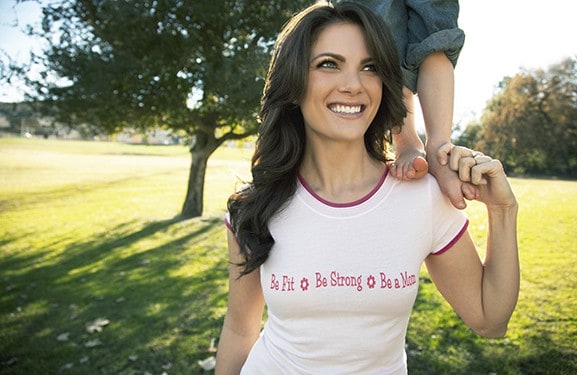
The Trickle Down Effect
Fitter parents equal fitter kids. Here’s why increasing your activity will benefit your whole family and five simple ways to get moving.
By nancy ripton | Photography by Sarah Orbanic
When life gets busy, it’s easy to forget about your own health and wellbeing. When we spend all day at work, guilt can keep us from taking a little extra time for ourselves. In reality, being active is one of the best things you can do for your child. A recent study at the University of Essex found that children who said their parents do almost no physical activity have a 50 per cent greater risk of being unfit than those with more physically active parents. This is especially significant since the overall fitness levels of our youth have been declining rapidly since the early 80s.
According to Stats Canada, close to one third of five- to 17-year-olds are overweight. The average 12-year-old weighs 11 to 14 pounds more than in 1981 and scores lower on aerobic, strength and flexibility tests. Although some parents seem eager to place the blame on everyone from schools to marketers, studies are finding that the biggest indicator of a child’s physical fitness is how active their parents are.
“Modeling being active can be very useful in raising fitter kids,” says Kristen Holm, an assistant professor of Medicine at National Jewish Health in Denver, CO. Holm was a lead author on a recent study in the Journal of Physical Activity and Health that found that on days when parents are more active, their kids are more active. “Parent and child activity levels are strongly correlated,” says Holm. The more steps a parent takes in a day, the more steps their child will take.
To help you take control of your health, Viva has uncovered five ways that even the busiest parent can make time for fitness.
Take Time for Scheduling
“Set aside time on Sunday night to plan your fitness activities for the upcoming week,” says Sharon Mann, mother of three and group fitness director at White Oakes Spa and Resort in Niagara-on-the-Lake, ON. Write down when you’re going to exercise the same way you would your children’s activities. If it’s on your schedule it’s tougher to brush off.
Watch Fitness DVDs
“Fitness videos are one of the easiest ways to squeeze exercise into a busy day,” says Mann. You can do them at home, and at anytime, and they’re economical.
Try Mini Activity Bursts
Health Canada recommends 2.5 hours of exercise a week, but that doesn’t mean you need to block out a solid chunk of time for daily physical activity. “Little things like parking the car farther away in the parking lot can make all the difference,” says Mann. Make a family pact to avoid elevators and walk whenever possible.
Prime your House for Fitness
Create a home that is full of fitness opportunities. Mann suggests substituting chairs for stability balls. “Using a stability ball at your desk is a great way to train your core while you work.” You could even switch out your dining room chairs for stability balls at some meals. Your kids will think it’s a blast to sit on a ball while they eat and your whole family will get fit at mealtime.
In Mann’s house they leave a set of hand-weights at the bottom of the stairs. When someone walks up the stairs, they carry the weights and leave them at the top. When they walk down, they take the weights with them. You could use books or any heavy object. “When you’re busy it’s all about making simple and easy opportunities to build strength,” says Mann.
Get Involved During your Child’s Activities
Volunteering to coach your child’s team is a great way to get fit. It also shows your child that you care about getting in shape. If you don’t feel comfortable coaching, use your child’s activity time to go for a walk for jog. Since her oldest son (now 22) was in kindergarten Mann has always volunteered to teach fitness once a month at her children’s school. “Helping kids find the fun and playful side of fitness keeps fitness fun for you too,” says Mann. VM










